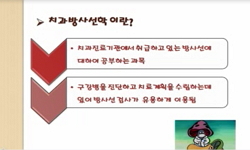The main purpose of this paper is to present ‘directionality’ for the proper understanding of Four Quartets in terms of Zen Buddhism. In the Four Quartets, T. S. Eliot considers the relationship between life in time, a life of bondage and sufferin...
http://chineseinput.net/에서 pinyin(병음)방식으로 중국어를 변환할 수 있습니다.
변환된 중국어를 복사하여 사용하시면 됩니다.
- 中文 을 입력하시려면 zhongwen을 입력하시고 space를누르시면됩니다.
- 北京 을 입력하시려면 beijing을 입력하시고 space를 누르시면 됩니다.
https://www.riss.kr/link?id=A107894463
- 저자
- 발행기관
- 학술지명
- 권호사항
-
발행연도
2021
-
작성언어
Korean
-
주제어
네 사중주 ; T. S. 엘리엇 ; 시간 속의 삶 ; 영원의 삶 ; 선 ; 선불교 ; 힌두교와 불교 철학 ; Four Quartets ; T. S. Eliot ; life in time ; life in eternity ; Zen ; Zen Buddhism ; Hindu and Buddhist philosophies
-
등재정보
KCI등재
-
자료형태
학술저널
- 발행기관 URL
-
수록면
71-97(27쪽)
-
KCI 피인용횟수
0
- 제공처
- 소장기관
-
0
상세조회 -
0
다운로드
부가정보
다국어 초록 (Multilingual Abstract)
The main purpose of this paper is to present ‘directionality’ for the proper understanding of Four Quartets in terms of Zen Buddhism. In the Four Quartets, T. S. Eliot considers the relationship between life in time, a life of bondage and suffering, and life in eternity, freedom, and happiness. The basis of the poem remains Eastern with the Bhagavad-Gita as the primary source of inspiration beyond his belief as an Anglo-Catholic. Furthermore, the spiritual leader of Hinduism, Maharishi’s Vedic Science is the most comprehensive discussion of the relationship between life in time and life in eternity. Therefore, Four Quartets has many points of view and voices which interlace Christian, Hindu and Buddhist philosophies and traditions. Zen is unity consciousness: individual life raised to the level of the universal, and the temporal raised to the level of the eternal. Time and timelessness are fundamental to Zen. It is a way of simply seeing life without abstractions and preconceptions beyond time. Zen is also defined as waking up in the present and Zen is beyond time and timelessness. From these perspectives, we can see the relationship between Four Quartets and Zen Buddhism.
목차 (Table of Contents)
- Ⅰ. 서론
- Ⅱ. 선(禪)의 기원인 불교와 선(禪)
- Ⅲ. 「번트 노턴」(“Burnt Norton”): “Still Point”와 비유비무(非有非無)
- Ⅳ. 「이스트 코우커」(“East Coker”): 회광반조(廻光返照)
- Ⅴ. 「드라이 샐비지즈」(“The Dry Salvages”): 선정(禪定)
- Ⅰ. 서론
- Ⅱ. 선(禪)의 기원인 불교와 선(禪)
- Ⅲ. 「번트 노턴」(“Burnt Norton”): “Still Point”와 비유비무(非有非無)
- Ⅳ. 「이스트 코우커」(“East Coker”): 회광반조(廻光返照)
- Ⅴ. 「드라이 샐비지즈」(“The Dry Salvages”): 선정(禪定)
- Ⅵ. 「리틀 기딩」(“Little Gidding”): 연기(緣起)와 공(空)
- Ⅶ. 결론
- Works Cited
- Abstract
참고문헌 (Reference)
1 석지현, "임제록" 민족사 2019
2 최희섭, "월러스 스티븐즈와 불교사상" 5 : 22-23, 2000
3 중촌원, "용수의 삶과 사상" 불교시대사 1993
4 동봉, "용수의 대승사상" 관음 출판사 1994
5 성창규, "영미시에 나타난 날개의 시학과 새 이미저리의 메타분석" 한국동서비교문학학회 (53) : 175-201, 2020
6 최종수, "엘리엇의 속과 성에 대한 집념" 11 : 66-67, 2001
7 최창호, "엘리어트의 네 개의 四重奏 그 理解와 鑑賞" 三志社 1988
8 박희선, "선의 탐구: 증도가의 세계" 홍법원 1982
9 엘리엇, T. S., "브래들리 철학의 인식과 경험" 형설 1997
10 동국대학교, "불교경전" 역경원 1986
1 석지현, "임제록" 민족사 2019
2 최희섭, "월러스 스티븐즈와 불교사상" 5 : 22-23, 2000
3 중촌원, "용수의 삶과 사상" 불교시대사 1993
4 동봉, "용수의 대승사상" 관음 출판사 1994
5 성창규, "영미시에 나타난 날개의 시학과 새 이미저리의 메타분석" 한국동서비교문학학회 (53) : 175-201, 2020
6 최종수, "엘리엇의 속과 성에 대한 집념" 11 : 66-67, 2001
7 최창호, "엘리어트의 네 개의 四重奏 그 理解와 鑑賞" 三志社 1988
8 박희선, "선의 탐구: 증도가의 세계" 홍법원 1982
9 엘리엇, T. S., "브래들리 철학의 인식과 경험" 형설 1997
10 동국대학교, "불교경전" 역경원 1986
11 김정휴, "달을 가리키면 달을 봐야지 손가락 끝은 왜 보고 있나" 대원정사 1990
12 석지현, "禪으로 가는 길" 일지사 1989
13 오경웅, "禪學의 黃金時代. 서돈각" 삼일당 1978
14 김용정, "佛敎와 現代思想" 同和出版公社 1982
15 Gish, Nancy K., "Time in the Poetry of T. S. Eliot: A Study in Structure and Theme" The Macmillan P 1981
16 Moody, A. D, "Thomas Stearns Eliot : Poet" Cambridge UP 1980
17 Park, Kyung-Il, "The Study on T. S. Eliot" 5 : 44-50, 1997
18 Eliot, T. S., "The Sacred Wood: Essays on Poetry and Criticism" Methuen 1972
19 Eliot, T. S., "The Sacred Wood: Essays on Poetry and Criticism" Methuen 1972
20 Kenner, Hugh, "The Invisible Poet: T. S. Eliot" Methuen 1959
21 Eliot, T. S., "The Complete Poems and Plays of T. S. Eliot" Faber and Faber 1978
22 Eliot, T. S., "The Complete Poems and Plays of T. S. Eliot" Dongguk UP 2001
23 정갑동, "T. S. 엘리엇의 불교사상" 7 : 34-35, 1999
24 박경일, "T. S. 엘리엇과 불교" 52-60, 1993
25 이창배, "T. S. 엘리엇 인간과 문학" 동국대학교 2001
26 김양수, "T. S. Eliot의 詩와 思想" 한신문화사 1992
27 김동룡, "T. S. Eliot’s Poetry" 신아 1988
28 Hay, Eloise Knapp, "T. S. Eliot’s Negative Way" Harvard UP 1982
29 Traversi, Derek, "T. S. Eliot: The Longer Poems" Harcourt Brace Jovanovich 1976
30 Unger, Leonard, "T. S. Eliot: Moments and Patterns" Minnesota UP 1966
31 Bergonzi, Bernard, "T. S. Eliot: Four Quartets" The Macmillan 1969
32 Bodelsen, C. A., "T. S. Eliot: Four Quartets" Rosenbilde and Baggen 1966
33 Shusterman, Richard, "T. S. Eliot and the Philosophy of Criticism" Columbia UP 1988
34 Spender, Stephen, "T. S. Eliot" The Viking 1975
35 Eliot, T. S., "On Poetry and Poets" Faber and Faber 1979
36 이명섭, "Four Quartets와 태장계 만달라에 육화된 자비와 신앙" (창간) : 117-145, 1993
37 Eliot, T. S., "Essays Ancient and Modern" Faber and Faber 1936
38 Eliot, T. S., "Collected Poems, 1909-1962" Faber and Faber 1909
39 Bradley, F. H., "Appearance And Reality" Clarendon 1951
40 Eliot, T. S., "After Strange Gods: A Primer of Modern Heresy" Faber and Faber 1933
41 Kim, Hyun-Ho, "A Zen Buddhist Approach to T. S. Eliot’s Four Quartets" Unpublished Personal Studies 2003
동일학술지(권/호) 다른 논문
-
영화 〈토미리스: 전쟁의 여신〉을 통해 본 스키타이 문화와 샤머니즘 고찰
- 한국동서비교문학학회
- 강준수(Junsoo Kang)
- 2021
- KCI등재
-
- 한국동서비교문학학회
- 권영탁(Youngtak Kwon)
- 2021
- KCI등재
-
트랜스미디어 전략과 기법을 활용한 캐릭터와 내러티브 확장 연구
- 한국동서비교문학학회
- 김성규(Seonggyu Kim)
- 2021
- KCI등재
-
오에 겐자부로, 블레이크에게서 길을 찾다: 『새로운 사람이여, 눈을 떠라』를 중심으로
- 한국동서비교문학학회
- 김희선(Heesun Kim)
- 2021
- KCI등재
분석정보
인용정보 인용지수 설명보기
학술지 이력
| 연월일 | 이력구분 | 이력상세 | 등재구분 |
|---|---|---|---|
| 2027 | 평가예정 | 재인증평가 신청대상 (재인증) | |
| 2021-01-01 | 평가 | 등재학술지 유지 (재인증) |  |
| 2018-01-01 | 평가 | 등재학술지 유지 (등재유지) |  |
| 2015-01-01 | 평가 | 등재학술지 유지 (등재유지) |  |
| 2011-01-01 | 평가 | 등재학술지 유지 (등재유지) |  |
| 2009-01-01 | 평가 | 등재학술지 유지 (등재유지) |  |
| 2006-01-01 | 평가 | 등재학술지 선정 (등재후보2차) |  |
| 2005-01-01 | 평가 | 등재후보 1차 PASS (등재후보1차) |  |
| 2003-07-01 | 평가 | 등재후보학술지 선정 (신규평가) |  |
학술지 인용정보
| 기준연도 | WOS-KCI 통합IF(2년) | KCIF(2년) | KCIF(3년) |
|---|---|---|---|
| 2016 | 0.56 | 0.56 | 0.55 |
| KCIF(4년) | KCIF(5년) | 중심성지수(3년) | 즉시성지수 |
| 0.5 | 0.45 | 1.007 | 0.18 |




 DBpia
DBpia







